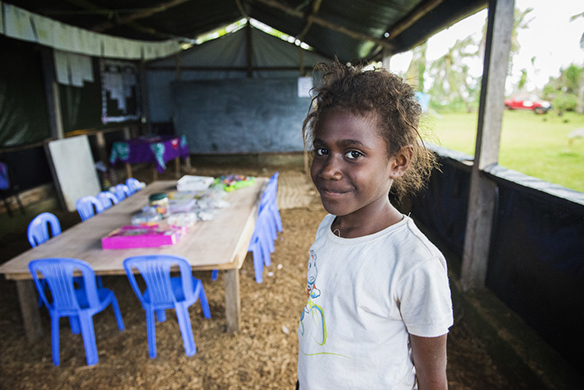How we know we're making a difference in Bangladesh
We've seen concerns and suggestions expressed by children acted on by local government, and influence policy change. There are now more children and young people on local disaster management committees. And more small-scale adaptation projects put forward by children and their communities have received financial support from local government.
As a result of this program, everyone we’ve been working with – girls, boys, parents, farmers, teachers, caregivers and government workers – has a more comprehensive understanding of what climate change is, how it impacts their lives and what they can do about it.
Communities whose livelihoods are at-risk have been supported to adopt alternative ways to earn an income, often adapting their agricultural practices to be more resilient to climate change shocks. And more people have embraced greener solutions in their lives, such as solar-based lights or rainwater harvesting.
Who makes our program possible in Bangladesh
This program is funded by the Australian Government. Through the government’s overseas aid program, Australians are providing children and families in Bangladesh and around the world with the chance to achieve a brighter future. Find out more about how Australian Aid is changing lives
here.
Learning about climate change in Vanuatu
Increasing cyclones and rising sea levels, coupled with decreasing local food and clean water, mean the children of Vanuatu are looking towards a challenging future. Save the Children have been helping them prepare for the unavoidable impacts of climate change by building more resilient communities.

We’ve been teaching children, young people and communities about climate change, so they can understand what it means for them. We’ve supported them to design and implement their own climate change adaptation projects, and share this knowledge with their peers and their government.
Why climate change awareness is important
Located on the Pacific ‘Ring of Fire’ and in a cyclone belt, Vanuatu is uniquely sensitive to tropical cyclones, tsunamis, droughts, flooding and rising sea levels. The frequency of weather-related disasters is expected to worsen as climate change impacts increase over time – threatening lives, villages, incomes and, ultimately, the ability of communities to survive.
Children and young people are among the most affected, and their futures depend on becoming resilient to the impacts of climate change. They have the potential to make a very real contribution to how Vanuatu responds, and yet their capacity to create change has been largely overlooked.
Save the Children's Climate Change Adaptation program in Vanuatu
We’ve been working closely with the Government of Vanuatu and other non-government organisations to address these challenges, build the climate resilience of communities, and support the achievement of Vanuatu’s climate and development policy objectives.
With our partners, we’ve supported thousands of women, men, girls and boys across five provinces to implement essential, local climate change adaptation actions that build their resilience to the impacts of climate change.
We helped the voices of the most vulnerable be heard in all government actions, plans and policies. And we made sure that climate finance was reaching people at the community level.
Learn more about this work in our
2017 Building Climate Resilience report.
How we know we made a difference in Vanuatu
With the help of our partners, we supported more than 5,000 women, men, girls and boys in 32 communities to incorporate essential and local climate change adaptation actions that build their resilience to the impacts of climate change.
These actions include re-planting mangroves, using solar dryers to preserve food ahead of the cyclone season, reusing community water and cooking scraps to increase the nutrient levels of their soils, and constructing rainwater tanks. We’ve held forums for community-members and local government officials to come together and discuss climate change impacts and solutions.
In 20 schools, teachers have been supported to teach more than 700 children about climate change, and how they can make a difference in their own schools, homes and local communities. With this knowledge, children have been able to talk to their families about changes they can make at home, and introduce valuable information about climate change to their communities.
Community climate change and disaster committees have given more women and girls leadership roles and decision-making power – a critical step in transforming the pre-existing gender norms that often restrict the capacity of girls and women to voice their opinions and affect change. And by working in partnership with other non-government organisations, we’ve been able to reach more people and have more impact.
This was a short and intensive program, designed to equip children and families with key climate change adaptation skills over 16 months. In 2017, the program closed, leaving a more resilient and resourceful community.
Who made our program possible in Vanuatu
Our climate change work in Vanuatu was supported by the Australian Government and USAID. Through the government’s overseas aid program, Australians are providing children in Vanuatu and around the world with the chance to achieve a brighter future. Find out more about how Australian Aid is changing lives
here.
Save the Children partnered with the Vanuatu Government, Oxfam, Vanuatu Red Cross, CARE, GIZ and Vanuatu Rural Development and Training Centre Association to help build the resilience of communities in Vanuatu.
Banner image: Robert McKechnie/Save the Children